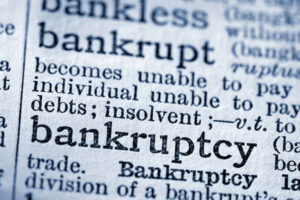Is your credit report throwing tantrums like a two-year-old? Embarrassing? Maybe it’s time to give it a much-needed makeover.
Let’s be real—seeing your credit score take a nosedive because of some negative information feels like getting dumped on prom night: shock, awe, and “why me, universe?”
But what if I said you could sweep those ugly marks under the rug, and give your credit score a makeover?
Yes, we’re going to flip that script.
What’s The Deal With Negative Info Anyway?
Negative information on your credit report can include late payments, collections, foreclosures, bankruptcies, you name it.
These are the financial boogeymen that haunt your dreams of buying a new car or owning a home.
They scream “risky business” to lenders, and not in a cool, Tom Cruise-dancing-in-socks kind of way.
Step 1: Know Thy Enemy
First off, grab your credit report. You get one free peek per year from each bureau—use it.
See those late payments from when you forgot to pay your credit card because you were binge-watching Game of Thrones? Or that medical bill you thought insurance paid?
They need to go.
Can You Dispute The Boogeymen Away?
Absolutely. Is the negative information wrong or looks sketchy? Dispute it.
It’s like telling the credit bureaus, “Prove it or remove it.” They have to investigate and either verify the info or kiss it goodbye.
And yes, mistakes happen more often than you’d think!
And yes, mistakes happen more often than you’d think!
Step 2: Goodwill Hunting
For those legit late payments, try a goodwill deletion.
Write to your creditor with your tail between your legs and a nice story about how you tripped over your great-aunt’s cat and forgot to pay.
Sometimes, they’ll erase small mistakes just to be nice (or to get you to stop calling).
Step 3: Settle It Like A Western Duel
Got collections? Don’t just pay them. Negotiate.
Offer less than what they’re asking for in exchange for deletion from your report—it’s a thing, really.
It’s called “pay for delete,” and it’s like haggling at a flea market but for your credit score.
What If It’s Bankruptcy?
Bankruptcy is the Godzilla of credit report monsters. It can stick around, stomping through your credit score for up to 10 years.
Can’t erase it early, but rebuilding starts now.
Get new forms of credit, like secured cards, and pay them meticulously. Show lenders your wallet-slinging days are behind you.
Timing Is Everything
Most negative information has a shelf life—typically seven years. After that, it’s supposed to vanish like Cinderella’s coach at midnight.
Most negative information has a shelf life—typically seven years. After that, it’s supposed to vanish like Cinderella’s coach at midnight.
If old debts are still showing up, wave that credit report in their face and demand they take it off.
Politely, of course.
Are You In It To Win It?
Here’s the deal: fixing your credit is a marathon, not a sprint. But with precise steps and a dash of chutzpah, you can cleanse your credit report of those pesky negatives.
Remember, every point on your credit score counts like calories in cheesecake—trim them wisely, and you’ll be strutting toward credit score heaven.
Ready, Set, Improve!
Why let mistakes of the past mess with your vibe? Scrub off that negative info, negotiate like you’re in an old Western barter, and start fresh.
Who knows, maybe next year you’re the one lending money to the banks! Okay, maybe not, but a you can dream, right?
In a nutshell, don’t let your credit score bum you out. Tackle it head-on, and turn those lemons into lemonade – or at least into a less sour financial state.
Ready to roll up your sleeves and get to it? Because, frankly, your credit won’t fix itself!
Don’t just sit there. Be proactive. Your credit report is your story—time to rewrite it like you’re the hero, not the villain.
Dance those negative marks right off your record and waltz into a brighter financial future. You’ve got this!
Now, go out there and show your credit report who’s boss!









